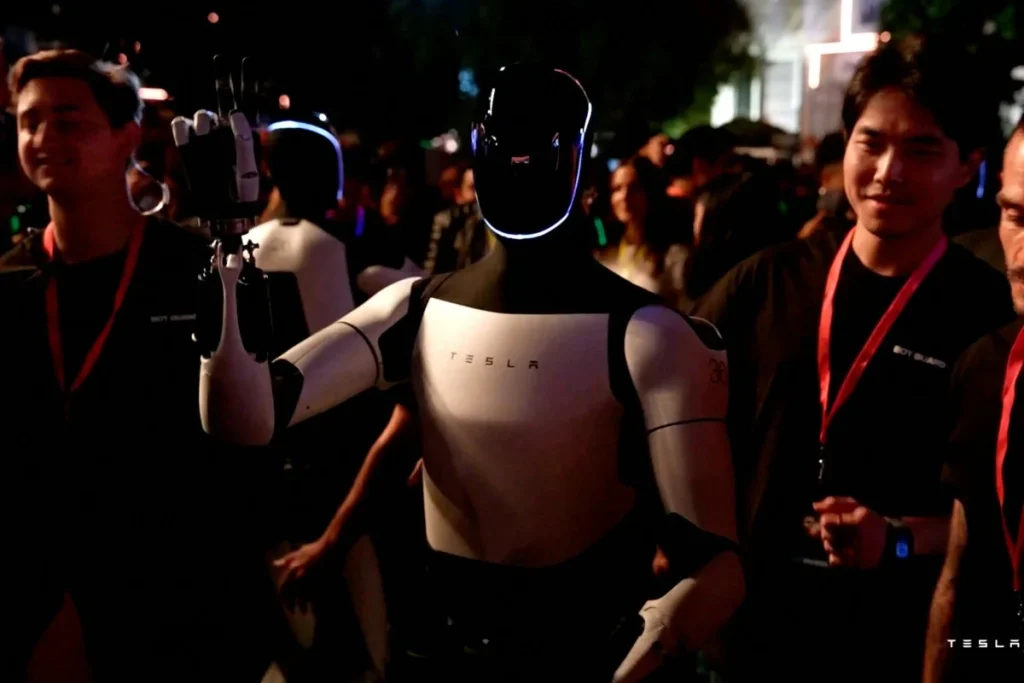In a recent showcase dubbed “We, Robot,” Tesla unveiled its next-generation humanoid robot, Optimus.
The event, intended to stir investor interest, showcased the potential capabilities of the robot, but left some attendees questioning its current market readiness due to behind-the-scenes revelations.

Held on a Hollywood studio lot, this glittering event was part theater, part sneak peek into what Tesla’s artificial intelligence-driven future could resemble.
However, reports have emerged that the robots were being controlled remotely by humans during many interactions, raising eyebrows among industry watchers.
Social media posts from the event suggest that Tesla’s Optimus robots, despite performing tasks autonomously like walking and engaging attendees, required human intervention for certain interactions.
A video clip making the rounds displays an Optimus bartender acknowledging human assistance, a fact not explicitly mentioned by CEO Elon Musk during the event’s webcast.
The capabilities of the Optimus robots have long been a focus for investors, who are eager to see whether these machines can become functional household entities.
Musk has been vocal about the ambitious plans for the robot, suggesting it could serve as a teacher, babysitter, dog walker, or even a friend, all with a price tag expected between $20,000 and $30,000.
During the event, Optimus prototypes demonstrated their social prowess by pouring drinks, playing games, and even dancing.
Despite this, some attendees noted the absence of technical information regarding the robots’ software advancements, which contributed to a lack of confidence in the immediate future of these humanoid machines.
Originally not slated to be part of the showcase, the robots were included last minute, reportedly leaving insufficient time to refine their independent operational capabilities, necessitating remote control measures.
Observers were also introduced to other products, notably the Cybercab robotaxi and a van concept, as guests experienced rides in autonomously driven vehicles.
However, many left the event feeling underwhelmed due to the presentation’s overall vagueness on future strategies and product specifics.
Critics pointed out that the event seemed more like a cinematic display than a clear depiction of existing technology.
Analyst comments post-event highlighted the apparent reliance on tele-operations, suggesting that much of the showcased technology is still in the speculative stages.
While some, including Nancy Tengler, CEO of Laffer Tengler Investments, expressed enthusiasm about Optimus’ performance, describing it as the highlight of the event, others remain cautiously optimistic about the future of Tesla’s AI endeavors.
Overall, Tesla’s stock took a hit following the showcase, sparking discussions about the company’s future innovation trajectory and the authenticity of Musk’s promises.
As the human element behind the robots’ successes comes to light, only time will tell if the grand vision outlined for Optimus will indeed be realized or remain a futuristic aspiration.
